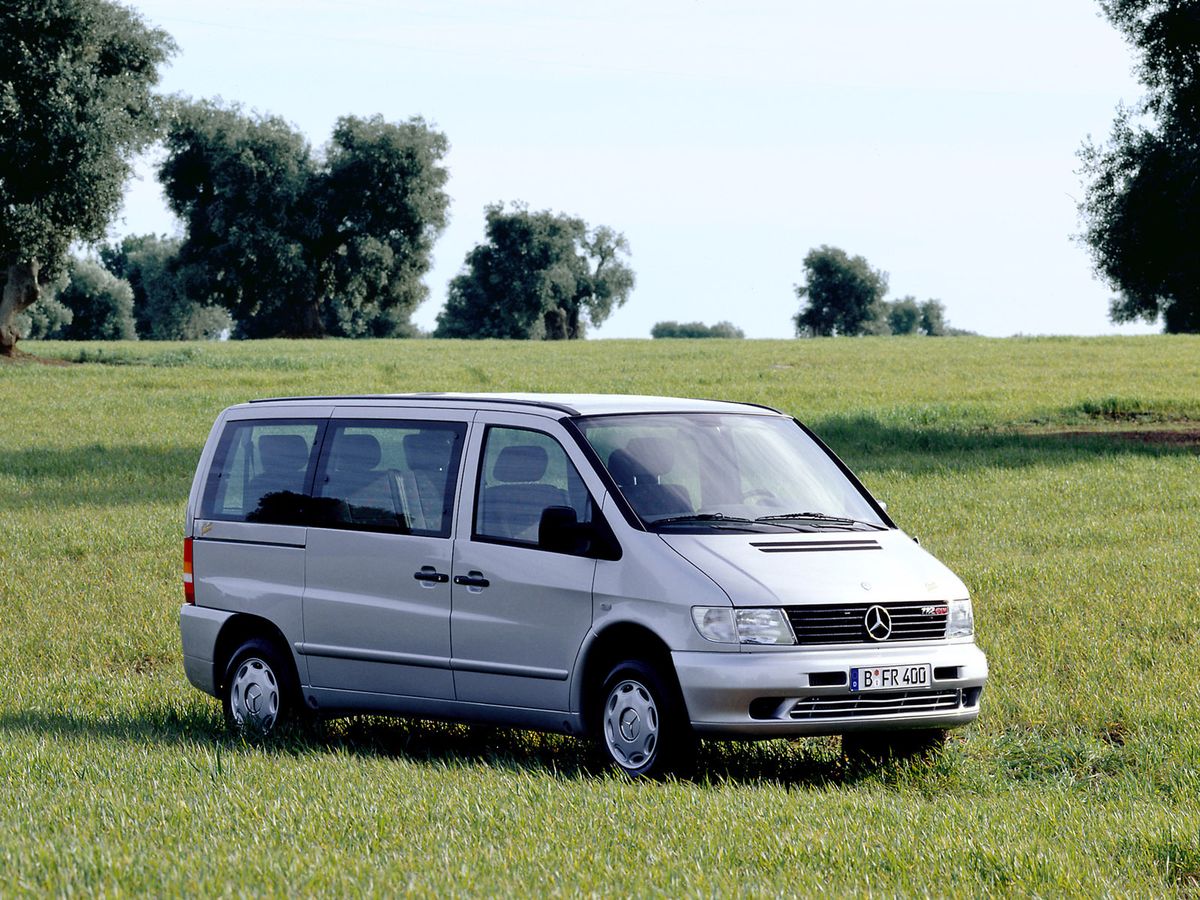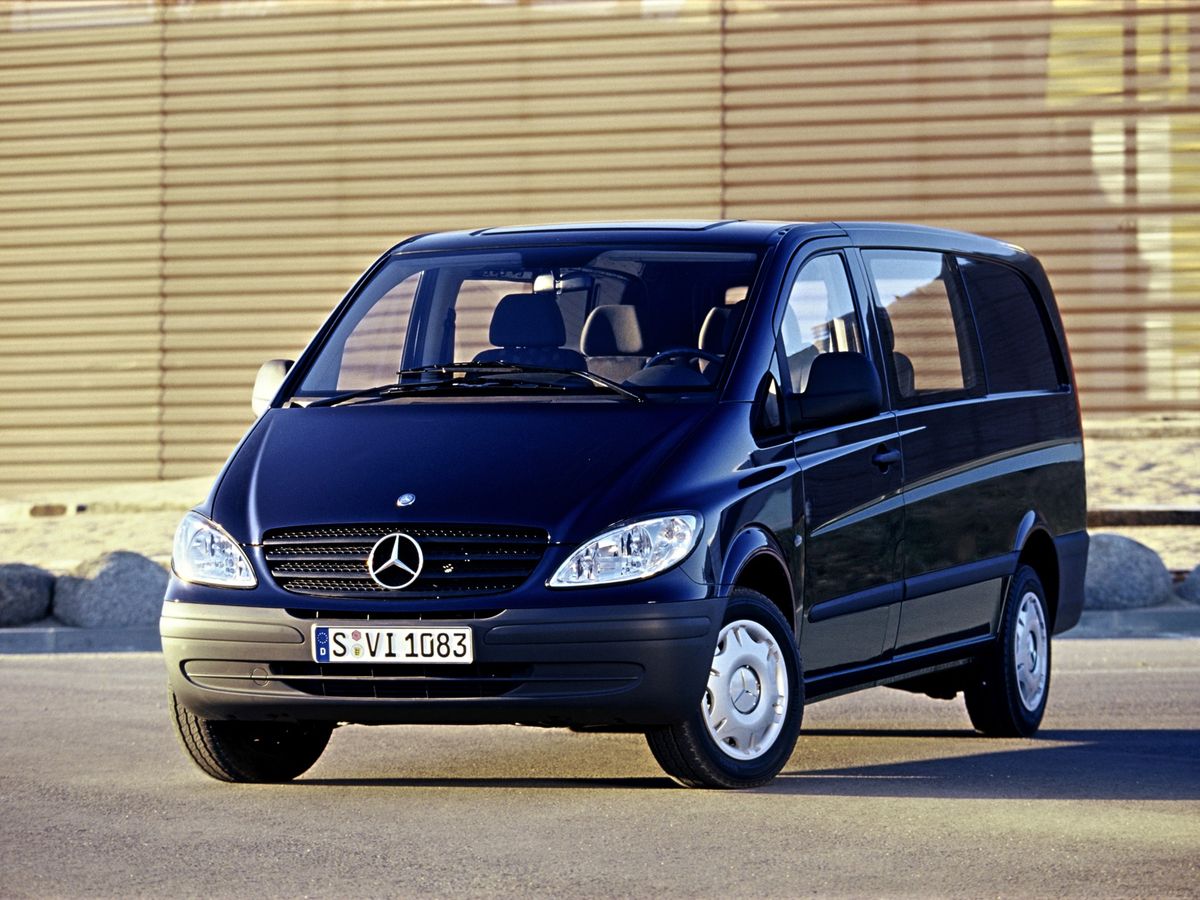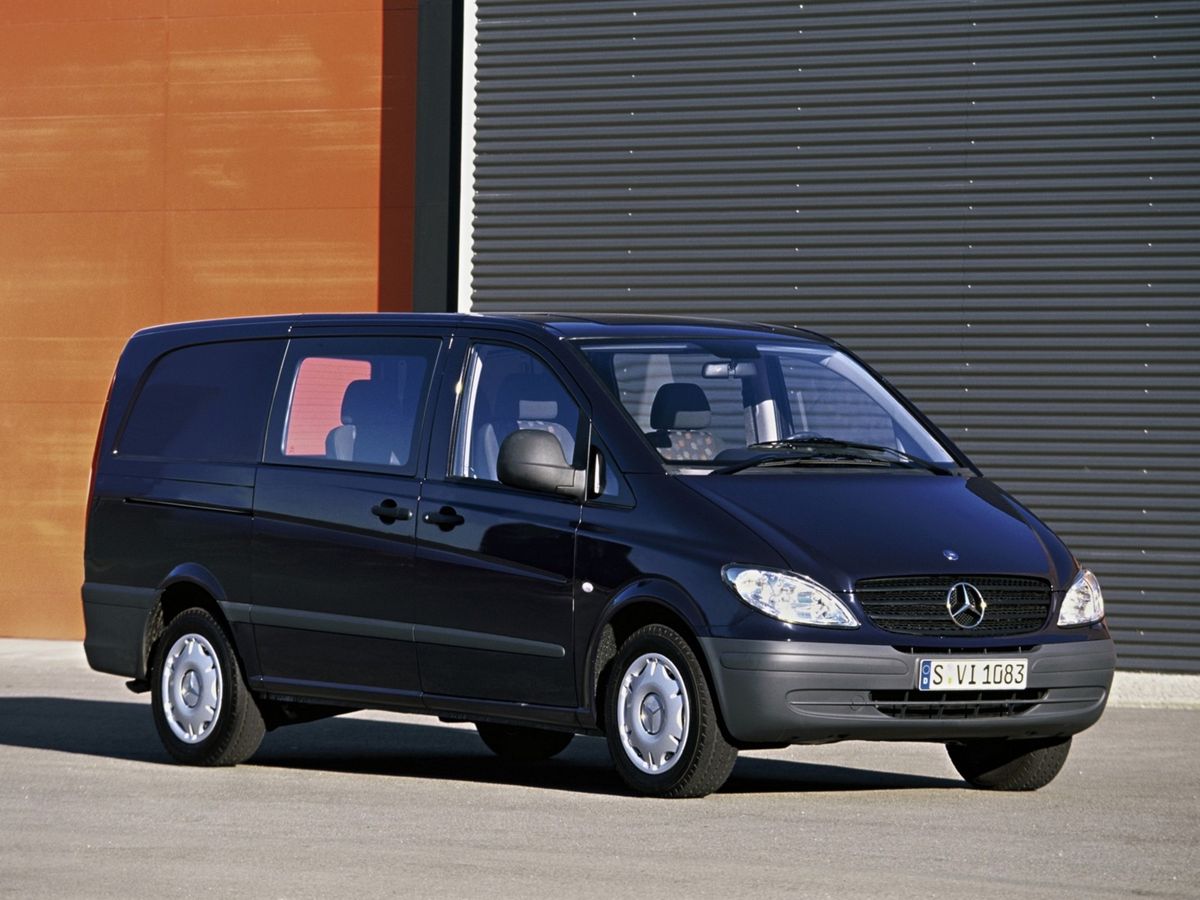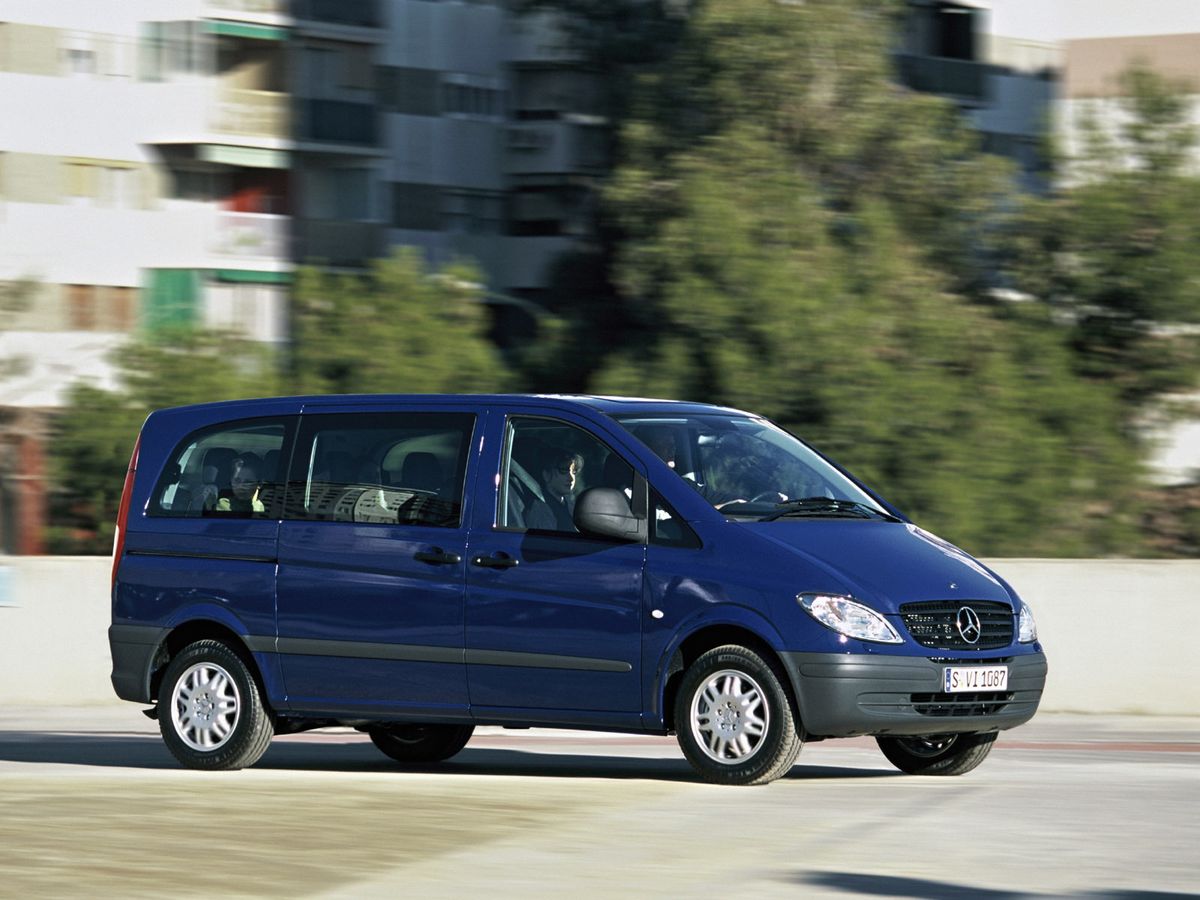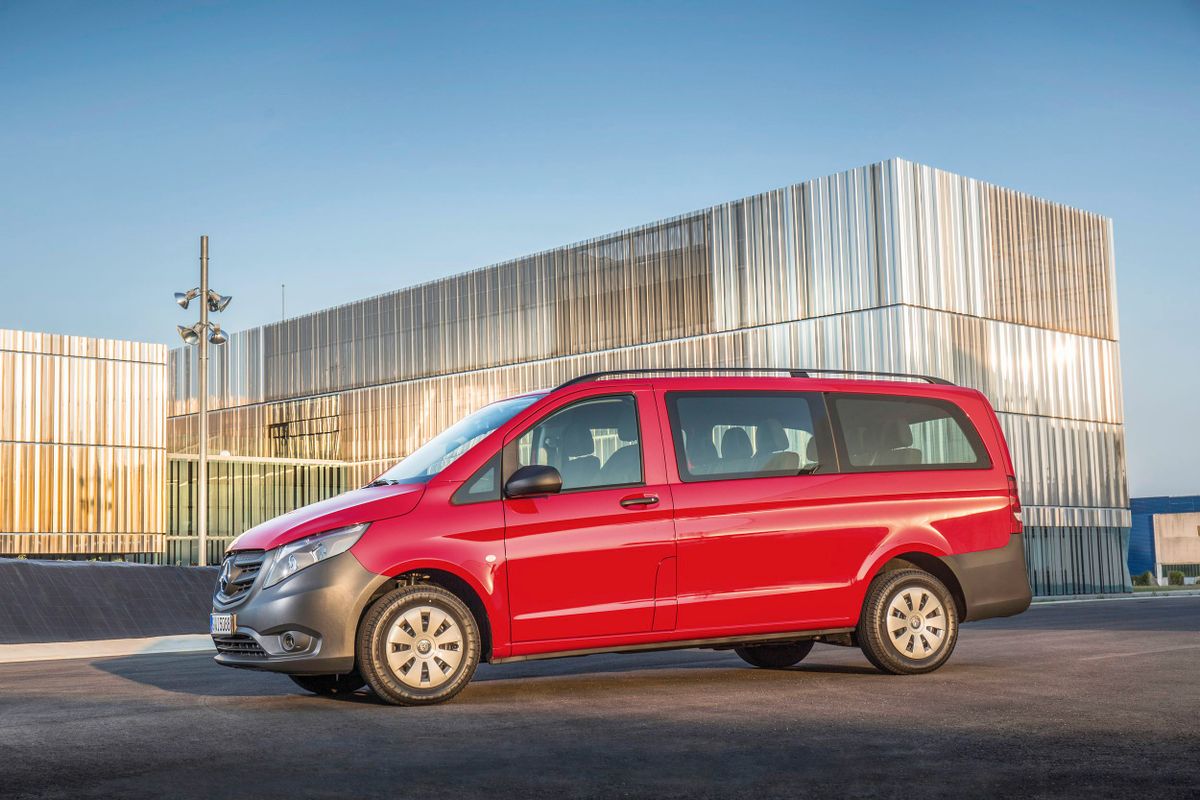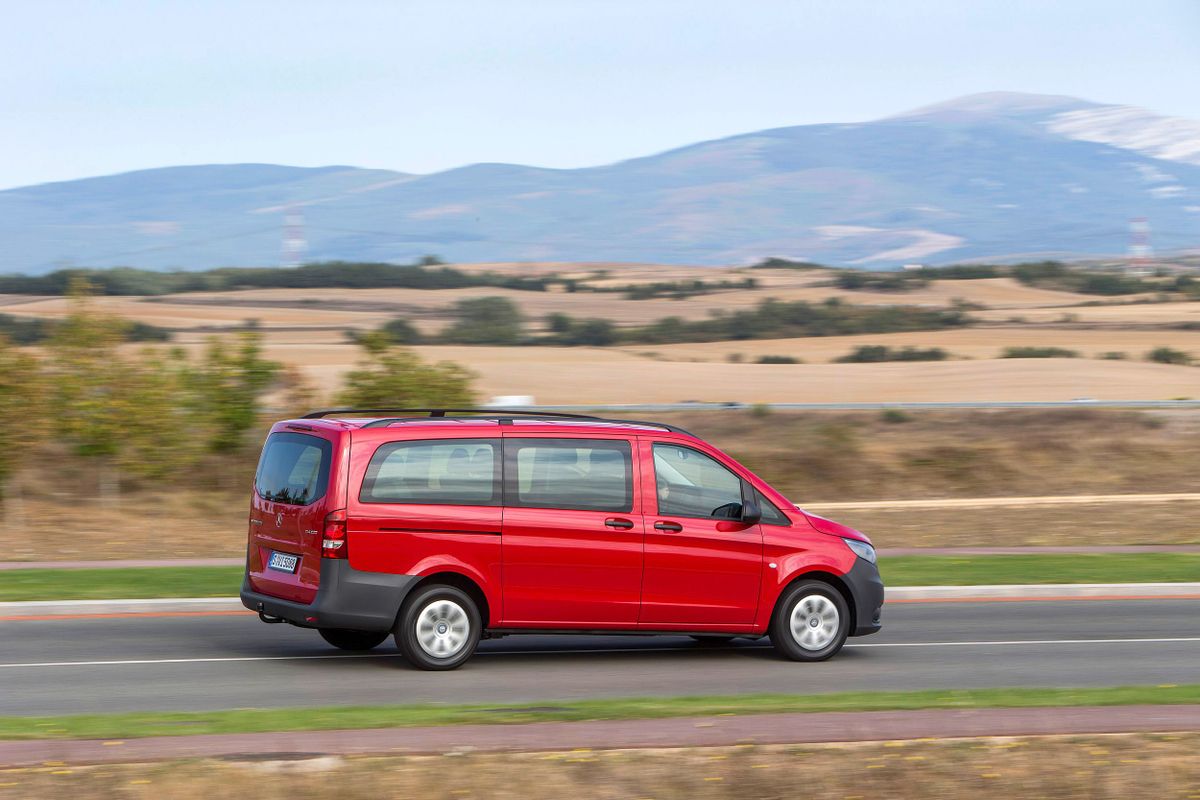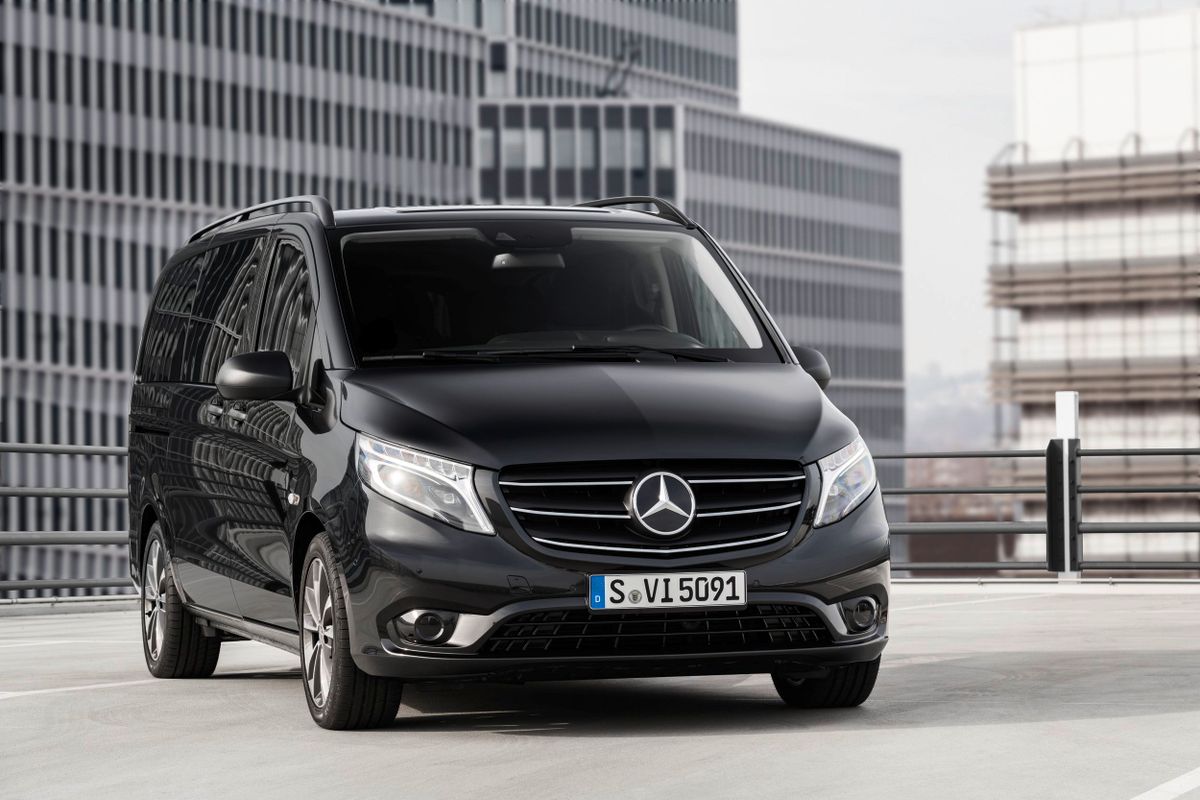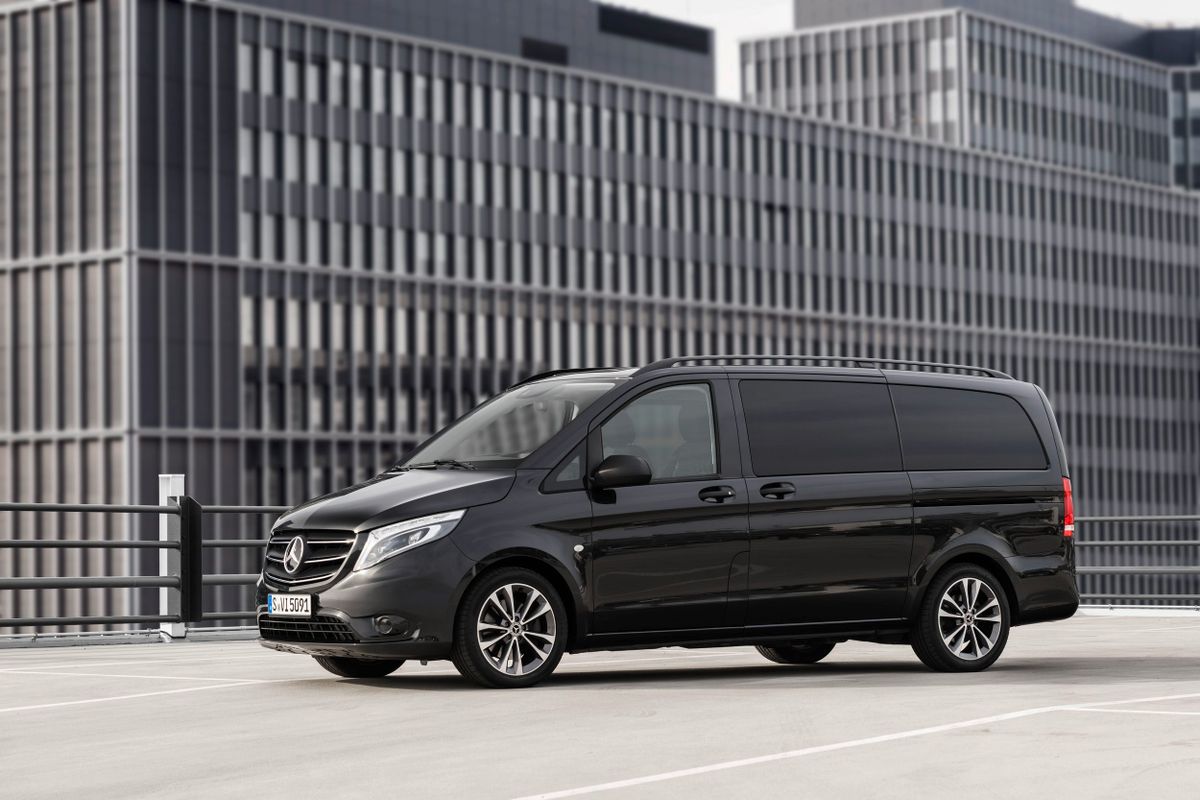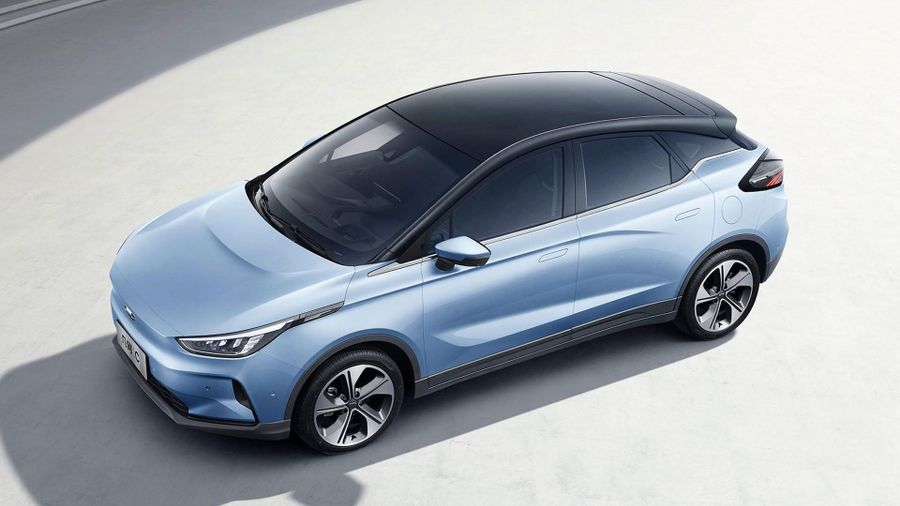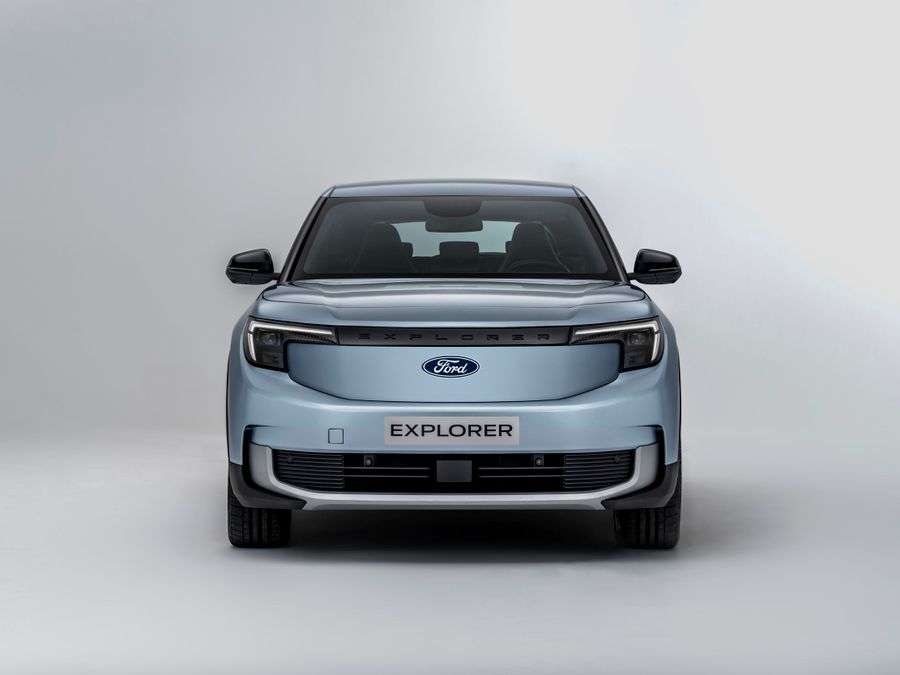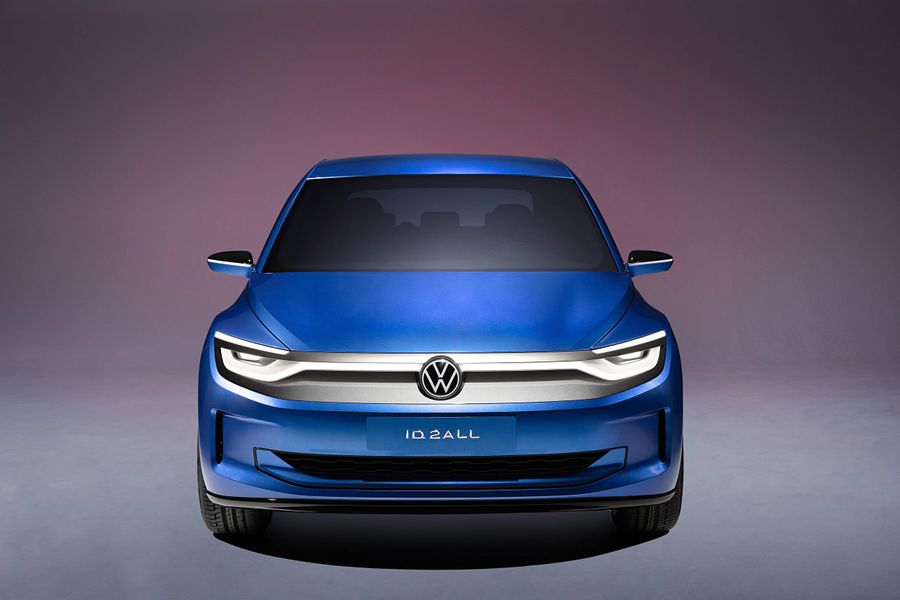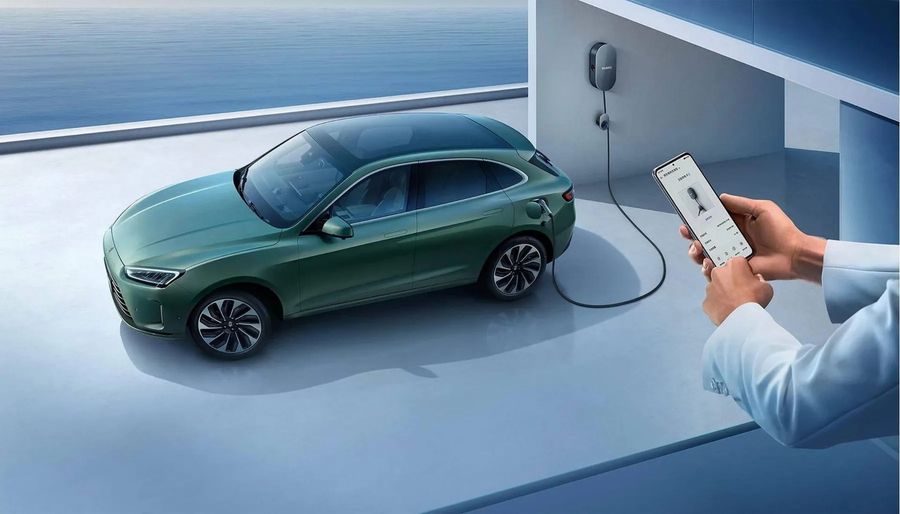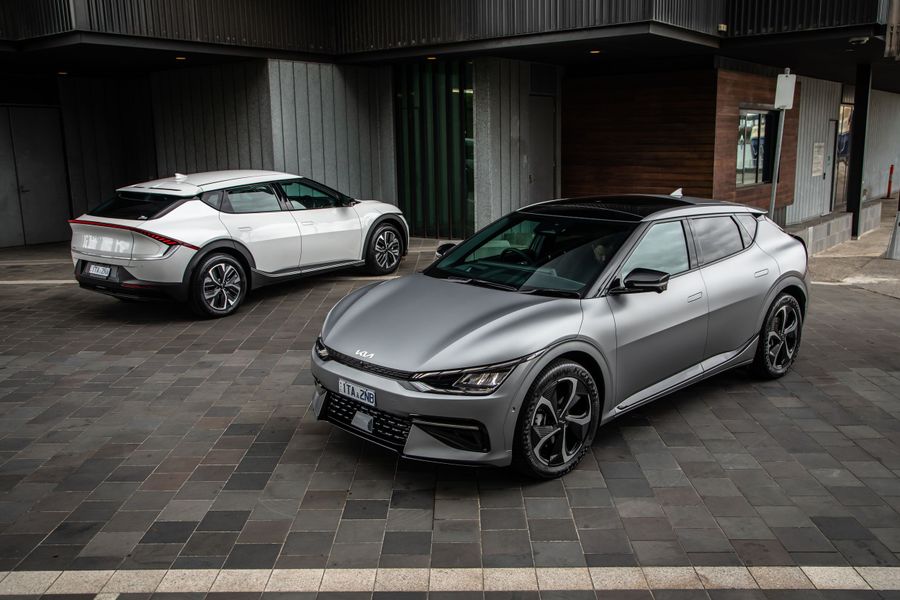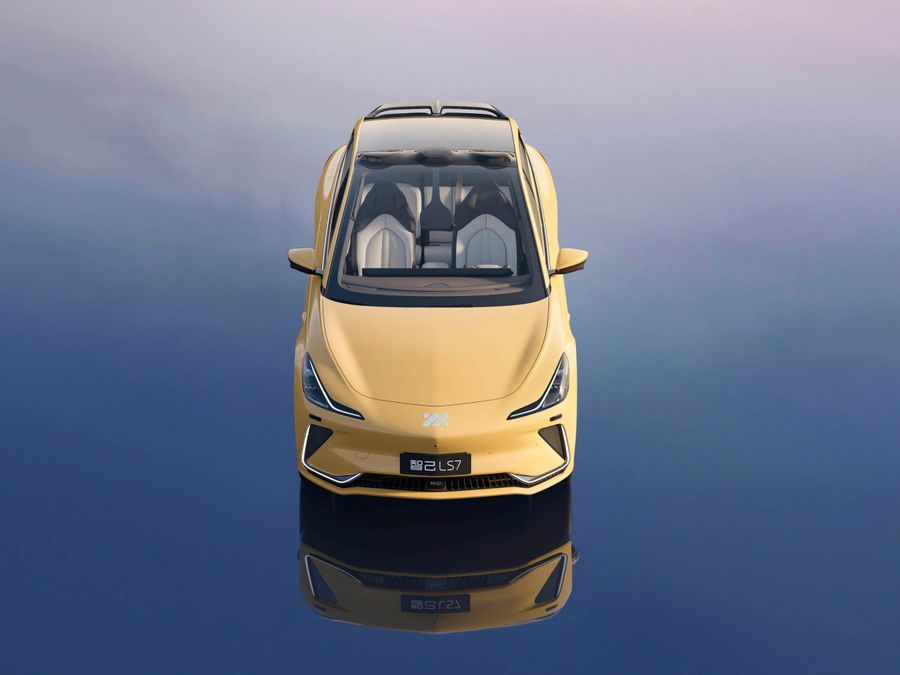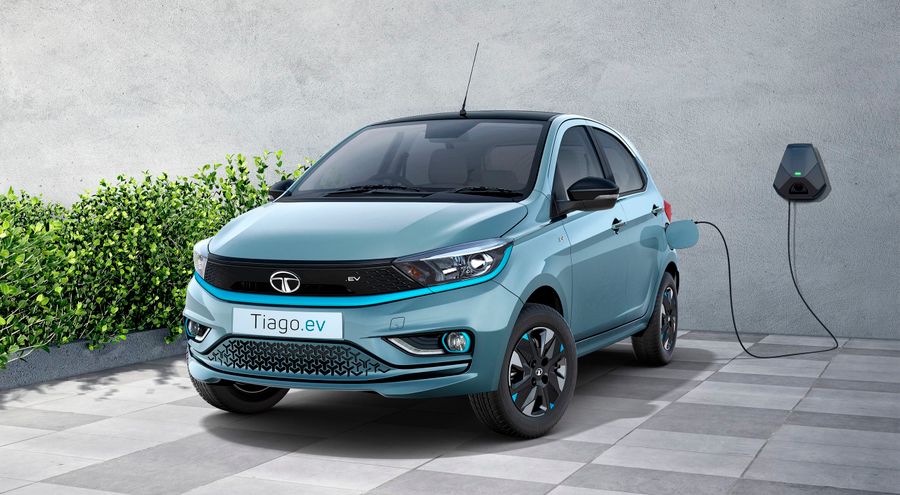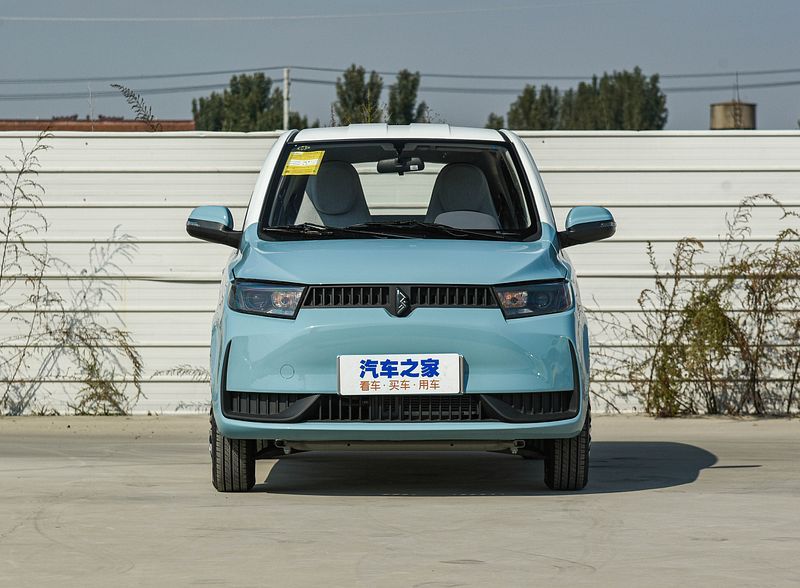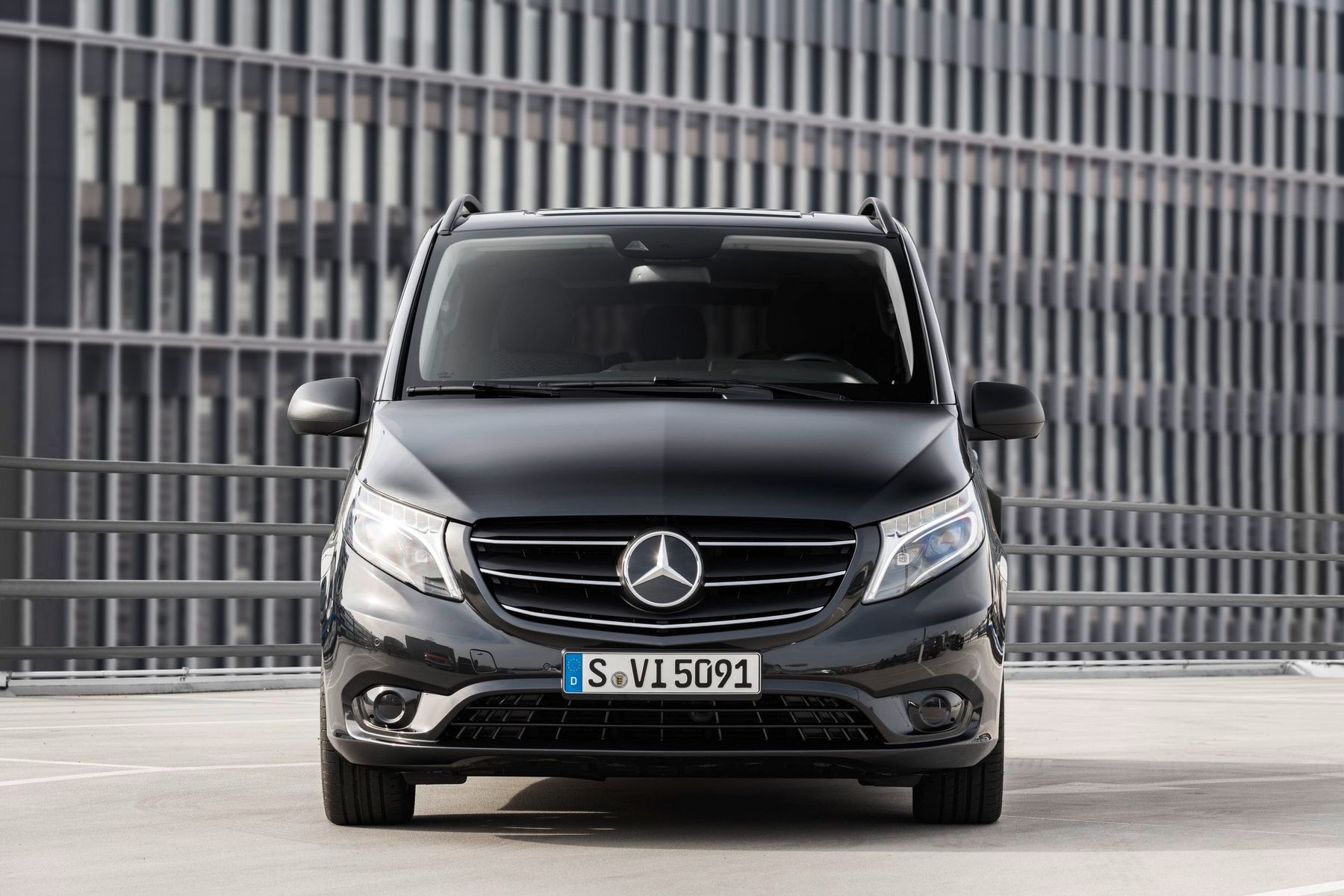
Mercedes Vito. It wants, it can, it does
The Mercedes Vito is a series of small vans or minivans produced since 1996. There are front, rear or all-wheel drive versions. There are three body lengths (compact, long and extra-long) and two wheelbases (standard and longer). There are petrol, diesel and all-electric variants.
Popular minibuses, cargo or cargo-passenger vans faithfully serve their owners, take on almost any job, while being roomy, comfortable, safe and maneuverable. As a commercial vehicle, the Vito van is quite functional. Due to its low height, it can easily enter any underground parking lot. At the same time, it has a good payload, different wheel-drive types and different engines.
There are some minor drawbacks, including the absence of a high roof version and mediocre interior trim in the entry-level versions. And the biggest drawback is that the Vito is more expensive than its competitors. But that’s why it is a Mercedes. At the same time, the Vito van differs from its luxury cousin Mercedes V-Class by its more affordable price.
The first generation
Development of the concept of the future minivan began in the 1990s under the leadership of Michael Mauer. The final design was patented in 1993. The new commercial multi-purpose vehicle (MPV) Mercedes Vito (W638) was unveiled in 1995. It was serially produced at a plant in Vitoria-Gasteiz, Spain. Then came the lighter passenger variant known as the V-Class, with a slightly different exterior, more luxurious interior and air-assist rear suspension.
The car had a front-engine and front-wheel drive layout, and became, in fact, the first front-wheel drive Mercedes (the A-Class appeared a little later). The model came with diesel engines with an output ranging from 79 hp (Vito 108 D) to 122 hp (Vito 110 D) and gasoline engines with an output ranging from 129 to 174 hp.
The first Vito featured sliding doors, which made the body more stable. The engineers carried out computer simulations and optimized the structure of the metal structures. The curb weight of the model ranged from 1,763 to 2,070 kg, depending on the modification. The drag coefficient was 0.34. In 1996, the Mercedes Vito won the Best Van of the Year Award.
The second generation
It was produced from 2003 to 2014. The cargo van retained the Vito name, while the lighter V-Class was renamed the Viano. The second Vito featured a more streamlined body design. The interior was also completely redesigned. The van was rear-wheel drive with a longitudinal powertrain layout, which significantly increased safety, as such a layout allowed the engine to go down in a head-on collision, and not into the passenger compartment, like in the previous generation.
The second generation Vito had three body length options: 4,748 mm, 4,993 mm, and 5,223 mm. There were two wheelbase sizes, three roof versions and five engines. Moreover, the car was offered in several versions, differing in the capacity and number of seats:
- Panel van: 2 seats and a trunk volume of 6.49 cubic meters.
- Vito Mixto: A 6-seater version with a trunk volume of 970 liters and a 9-seater version with a trunk volume of 1 cubic meter.
The entry-level Vito came with central locking, steering wheel adjustment, electric drive, power windows, CD player, and heated side mirrors.
The third generation
It has been produced from 2014 to the present, and was restyled in 2018 (as of 2021). The new Mercedes Vito has turned out to be very formidable. It comes with a long list of new functions, for example, such as the LED Intelligent Light System (adjusts lighting depending on road conditions, weather and external light conditions). It has many engine options, including five diesel engines with an output ranging from 88 to 190 hp and a gasoline engine with an output of 211 hp. By default, the minivan is equipped with a 6-speed manual transmission, and there is an optional 7-speed automatic transmission. Interestingly, there are the rear-wheel, front-wheel and all-wheel drive versions. The rear-wheel drive Vito can carry up to 1,369 kg of cargo.
The buyers can choose from three possible body lengths: 4,895 mm, 5,140 mm and 5370 mm. The cargo space of the cargo-passenger Vito will allow to accommodate from 3.1 cubic meters of cargo in a compact version to 3.6 cubic meters in a longer version (both with a wheelbase of 3,200 mm), and up to 4.1 cubic meters in an extra-long version (with a wheelbase of 3,430 mm). The maximum volume of the van is 5.8 or 6.3 cubic meters (with a compact or longer body) and reaches 6.9 cubic meters for the extra-long Vito Van.
Versions
The new Mercedes Vito can currently be purchased in three versions: Vito Van, Vito Mixto and Vito Tourer. All of them have a maximum permissible mass for transportation of up to 3,200 kg. Mercedes makes sure you find exactly what you need, and even considers your special requirements. The manufacturer offers reliable and practical options for body conversion. Compliance with customer requirements is monitored at all stages: during production, delivery and commissioning.
Vito Van
- Three body lengths
- The cargo space volume of the extra-long version reaches 6.6 m³
- The long and extra-long versions accommodate up to three Euro pallets, whereas the loading is carried out from the rear and through a sliding door
- A solid bulkhead between B-pillars (optional) and a solid bulkhead with fixed glass
Vito Mixto
- Three body lengths
- The cargo space volume of the extra-long version reaches 4.1 m³
- Space for three passengers in the passenger compartment and one Euro pallet in the cargo compartment
- A solid bulkhead in the pillar area with fixed glass (optional)
Vito Tourer
- Depending on the seating layout variant, it can accommodate up to 9 people, the ‘2 — 2 — 3’ layout with three rows of seats in the passenger compartment (optional)
- A sliding door on the left side (optional)
- A load compartment floor with load securing eyes
Personal Vito Tourer
- Three body lengths: compact (standard) – 4,895 mm, long – 5,140 mm and extra-long – 5,370 mm
- Depending on the seating layout, it can accommodate up to 9 people, the ‘2 — 2 — 3’ layout with three rows of seats in the passenger compartment (optional)
- A sliding door on the left side (optional)
- A panoramic sunroof with sliding sunroof (optional)
Safety
The 2021 Mercedes Vito can be distinguished by high safety. All models are equipped with disc brakes, an adaptive ESP system, airbags (from 4 to 8), a tire pressure monitoring system, a parking assistant, an ILS ‘intelligent LED light’ mechanism and a Crosswind Assist system designed to protect the vehicle’s trajectory from strong wind gusts…
For an additional charge, the new Vito is equipped with Collision Prevention Assist, which monitors the distance to the vehicle in front, warns with an acoustic and visual signal of a possible collision and automatically increases the braking force in case of danger, helping to avoid collisions. Moreover, the options include a blind spot monitoring system.
2018 restyling
As usual, the restyled 2019/2020 Mercedes Vito offers an incredible variety of modifications. It features a new radiator grille with a new structure and wheels of a different design, as well as an intelligent cruise control with an emergency braking assistant, better sound insulation, new LED optics with automatic high beams, a digital interior mirror with the rear camera image and AirMatic air suspension with adaptive adjustable dampers. Most importantly, the all-electric eVito van is now available with an 85 kW (116 hp) engine and a driving range of 150 km.


